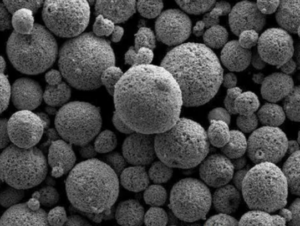How Does Additive Manufacturing Revolutionize Material Production?
Introduction
Additive manufacturing, also known as 3D printing, has emerged as a transformative technology that is revolutionizing material production in various industries. Unlike traditional manufacturing processes that involve subtractive methods, additive manufacturing builds objects layer by layer, directly from digital models. This article explores the profound impact of additive manufacturing on material production and its implications for industries worldwide.
The Basics of Additive Manufacturing (H2)
Additive manufacturing is a process that enables the creation of complex three-dimensional objects by adding materials layer upon layer. It begins with a digital model, which is sliced into thin cross-sections. These slices guide the additive manufacturing machine, which deposits or solidifies materials, such as plastics, metals, ceramics, or composites, layer by layer until the final object is formed.
Enhanced Design Freedom and Complexity (H2)
One of the key advantages of additive manufacturing is its ability to unlock new design possibilities. Unlike traditional manufacturing methods, which often impose limitations on design due to tooling constraints, additive manufacturing allows for intricate geometries and complex structures. This newfound design freedom enables engineers and designers to create components with optimized shapes, internal channels, and lightweight structures that were previously unattainable.
Increased Efficiency and Resource Conservation (H2)
Additive manufacturing offers significant efficiency gains over conventional manufacturing processes. Since it builds objects layer by layer, it eliminates the need for extensive material removal, reducing waste generation. Additionally, additive manufacturing enables the consolidation of multiple parts into a single component, reducing the need for assembly and minimizing material usage. These factors contribute to resource conservation and can lead to cost savings, particularly in industries where material waste and transportation costs are significant.
Rapid Prototyping and Iteration (H2)
One of the earliest and most widely adopted applications of additive manufacturing is rapid prototyping. It allows designers and engineers to quickly produce physical prototypes from digital designs, significantly reducing the time and cost associated with traditional prototyping methods. With additive manufacturing, iterations and design changes can be implemented swiftly, enabling faster product development cycles and facilitating innovation.
Customization and Personalization (H2)
Additive manufacturing has revolutionized the concept of customization and personalization. Traditional manufacturing often relies on mass production, where identical objects are produced in large quantities. In contrast, additive manufacturing allows for on-demand production of customized products tailored to individual requirements. This capability has far-reaching implications across industries, from healthcare, where personalized medical devices can be created, to consumer goods, where customized products can cater to unique customer preferences.
Supply Chain Disruption and Localized Production (H2)
The decentralized nature of additive manufacturing has the potential to disrupt traditional supply chains. Instead of relying on centralized manufacturing facilities and long-distance transportation, additive manufacturing allows for localized production. This shift could have profound implications, reducing lead times, transportation costs, and the environmental impact associated with long-distance shipping. It also enables the creation of spare parts on-demand, reducing inventory and ensuring timely availability.
Advances in Material Science (H2)
Additive manufacturing has sparked a wave of innovation in material science. The unique requirements of 3D printing have driven the development of new materials specifically designed for additive manufacturing processes. These materials possess enhanced properties, such as increased strength, improved flexibility, or enhanced heat resistance. As additive manufacturing continues to evolve, material advancements will further expand the range of applications and push the boundaries of what can be produced.
The Future of Additive Manufacturing (H2)
The future of additive manufacturing holds tremendous potential. As technology advances, we can expect faster printing speeds, larger build volumes, and improved material options. Industries such as aerospace, healthcare, automotive, and consumer goods are already leveraging additive manufacturing for prototyping and production. With ongoing research and development, additive manufacturing will likely become more accessible, cost-effective, and integrated into mainstream manufacturing processes.
Conclusion (H2)
Additive manufacturing, or 3D printing, is revolutionizing material production across industries. Its ability to offer enhanced design freedom, increased efficiency, rapid prototyping, customization, and localized production is transforming the way objects are made. Furthermore, advances in material science continue to expand the capabilities and applications of additive manufacturing. As this technology progresses, it holds great promise for reshaping manufacturing processes and driving innovation in countless fields.
FAQs (H2)
1. How does additive manufacturing work?
Additive manufacturing builds objects layer by layer, directly from digital models. It starts with a digital design, which is sliced into cross-sections. The additive manufacturing machine then deposits or solidifies materials, layer by layer, following the design specifications until the final object is produced.
2. What are the advantages of additive manufacturing over traditional manufacturing?
Additive manufacturing offers enhanced design freedom, increased efficiency and resource conservation, rapid prototyping and iteration, customization and personalization, supply chain disruption, localized production, and advances in material science.
3. In which industries is additive manufacturing being utilized?
Additive manufacturing is being utilized in various industries, including aerospace, healthcare, automotive, consumer goods, and more. It has applications in prototyping, production of customized products, spare part manufacturing, and research and development.
4. How does additive manufacturing contribute to sustainability?
Additive manufacturing reduces material waste by eliminating the need for extensive material removal. It also enables localized production, reducing transportation costs and environmental impact. Additionally, it facilitates the creation of customized products, reducing overproduction and minimizing the disposal of unused inventory.
5. What does the future hold for additive manufacturing?
The future of additive manufacturing looks promising, with ongoing advancements in technology and material science. We can expect faster printing speeds, larger build volumes, increased affordability, and further integration into mainstream manufacturing processes. The potential applications and benefits of additive manufacturing are vast and continually expanding.

